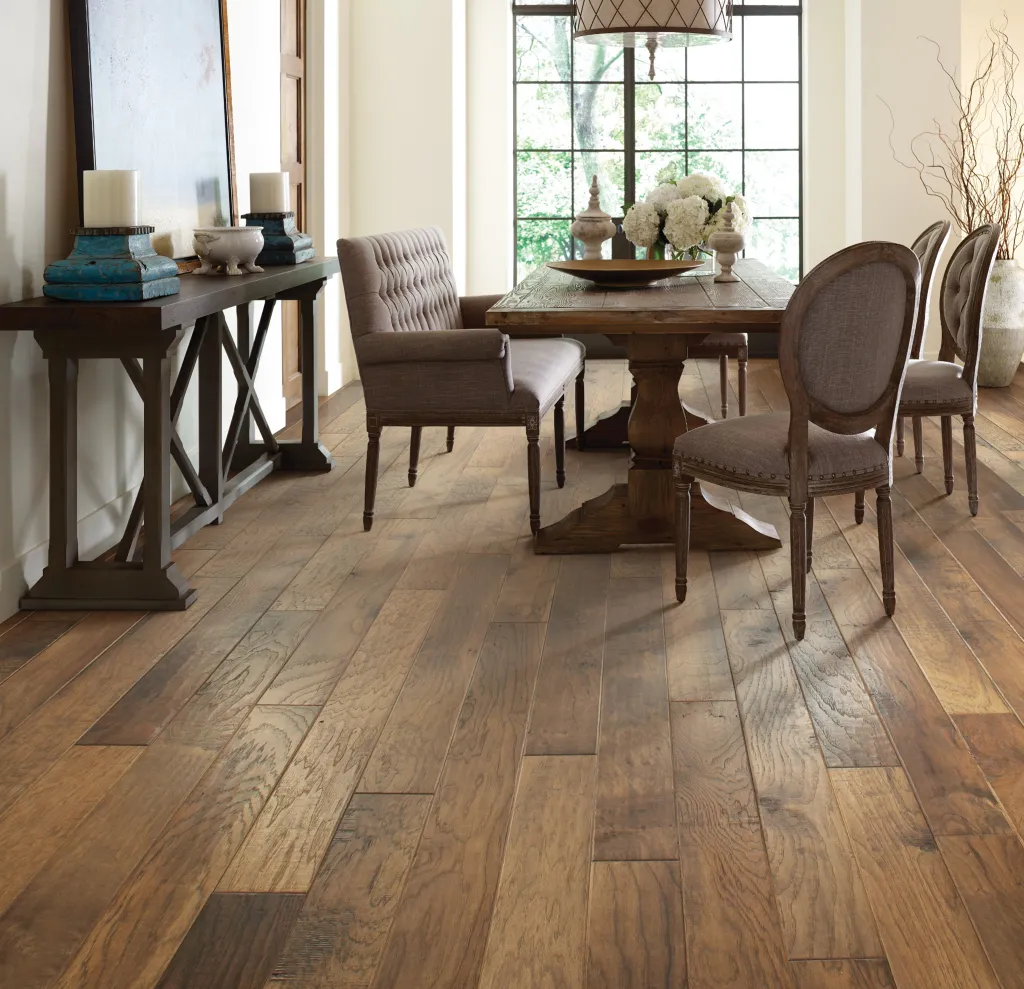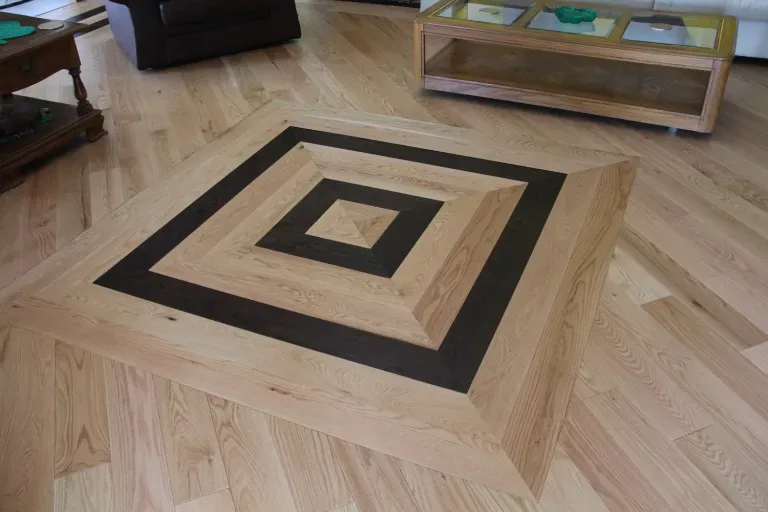Most homeowners have a lot of criteria when choosing new floors. In addition to achieving the perfect aesthetic and finding durable, long-lasting options, many consumers prioritize sustainable flooring materials. Driven by environmental and health considerations, demand for environmentally friendly flooring has steadily increased as a part of a broader shift in consumer preferences for green products.
Get expert guidance from Floor Coverings International® about the most environmentally friendly flooring options:
- Wood
- Stone
- Bamboo
- Cork
- Rubber
What Makes Flooring Sustainable?
Sustainable flooring options have several characteristics that collectively minimize the environmental impact of flooring materials, from manufacturing to disposal. Also referred to as eco-friendly, environmentally friendly, or green flooring, these products should:
- Be made (partially or entirely) from natural, renewable materials
- Emit little to no carbon, chemicals, or other compounds throughout their lifecycles
- Be easily recycled, repurposed, or biodegraded
Most eco-friendly flooring materials meet these criteria; however, several other variables influence their overall environmental impact. For example, the practices of one flooring manufacturer may result in more carbon emissions or less ethical sourcing of materials than those of another.
Are Wood and Stone the Most Eco-Friendly Flooring Materials?
Terms like "natural" and "renewable" elicit almost immediate images of solid wood floors or natural stone. These two options are indeed among the most popular (and oldest) flooring materials, but they aren’t the only choices, and they aren’t necessarily the most sustainable. There are several factors that influence whether they’re a safe environmental choice.
How Environmentally Friendly Is Hardwood Flooring?
Wood floors are made from a natural, renewable source that can also be reused and repurposed. Because hardwood floors can be refinished, they also last for decades, reducing the carbon footprint of replacement by over 75%. Not all wood flooring is equal, however. The sourcing and manufacturing of wood flooring result in significant differences in sustainability. It’s essential to determine the exact source of the timber, whether it resulted from clear-cutting, and whether the forest will be regrown.
How Eco-Friendly Is Stone Flooring?
Stone’s manufacturing process causes little excess carbon emissions, as it is formed by the earth itself. When natural stone flooring is ethically sourced and transportation emissions are minimized, it is an extremely sustainable option. Stone flooring is also long-lasting and recyclable, with its premium price tag being the only hurdle for many environmentally conscious consumers.
Related: The Elegance of Granite Floor Tiles
Three of the Best Sustainable Flooring Options
While they may not be at the top of your shopping list yet, it’s worth considering bamboo, cork, and rubber. These three environmentally safe flooring options check all the sustainability boxes without sacrificing form or function.
Why Bamboo Flooring Is Eco-Friendly
Often considered one of the most sustainable building materials on the planet, bamboo’s appeal is partially due to its regrowth speed. Bamboo can be harvested every three to five years, compared to hardwoods that take anywhere from two decades to over a century to regrow. It also requires less acreage than hardwood, limited watering, doesn’t contribute to clear-cutting, and is both reusable and recyclable.
The one negative to bamboo is the manufacturing process. Converting bamboo into floor-ready planks is an energy-intensive process, and some companies rely on potentially harmful adhesives.
Why Cork Is Eco-Friendly
Like bamboo, cork is renewable, perhaps even more so. Cork is harvested from the bark of a tree, and since cork oak trees can be harvested for over 200 years, it’s an extensively renewable material. This also mitigates emissions from harvesting, and cork requires much less processing than other forms of timber for commercial use. It is reusable, recyclable, and biodegradable.
Cork’s biggest drawbacks are its relatively high costs compared to other flooring options and its limited applications. It is not waterproof, making it a less-than-ideal choice for kitchens, laundry rooms, or areas with high moisture risks.
Why Rubber Is Eco-Friendly
Bamboo is wood, cork is bark, and rubber is yet another renewable material from trees – it’s sap. Technically, rubber is a form of natural latex sourced primarily from the Hevea brasiliensis tree. Unlike bamboo and cork, its sustainability credentials depend heavily on whether it is recycled or not.
- Recycled rubber flooring is made from recycled tires and other forms of post-consumer waste. Some types of recycled flooring use adhesives and binding agents that contain volatile organic compounds (VOCs), but most are relatively low-VOC. This is considered the most eco-friendly type of rubber flooring.
- Natural rubber flooring is made from latex, a renewable resource. However, some rubber plantations contribute to deforestation and use chemicals, including VOCs. Look for sustainably managed sources of natural rubber whenever possible.
How to Choose Eco-Friendly Floor Coverings
Since some options are more sustainable than others, even within the same material category, you can make more eco-conscious decisions by weighing these factors.
- Adhesives: Look for flooring that doesn’t require glue for installation, or opt for low-VOC adhesives if possible.
- Durability: Select long-lasting, durable flooring that won’t require frequent replacement.
- Manufacturing and processing: Research the material’s energy consumption, chemical use, and other manufacturing inputs, as well as the specific manufacturer’s practices. Don’t forget about transportation, and source domestic flooring options whenever possible.
- Flooring disposal: When flooring needs to be replaced, find out how easy it is to recycle or reuse old flooring materials to avoid occupying space in landfills.
Find the Best Environmentally Friendly Flooring for Your Home
Floor Coverings International® makes it easy to find, compare, and enjoy environmentally safe flooring for your home or business. We work with some of the industry’s most reputable manufacturers to offer customers a wide selection of green flooring products, plus expert installation and a seamless, stress-free shopping experience. Elevate your space; schedule a free, in-home consultation today!



